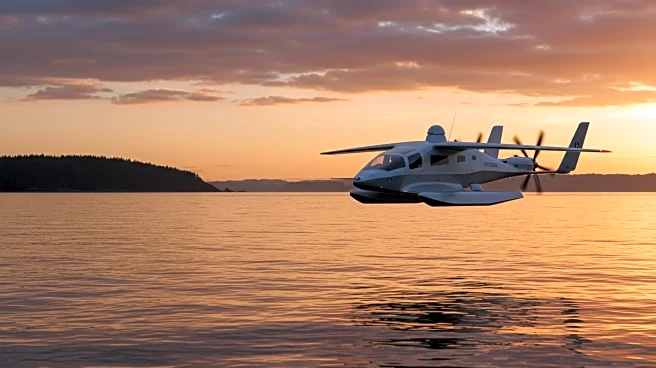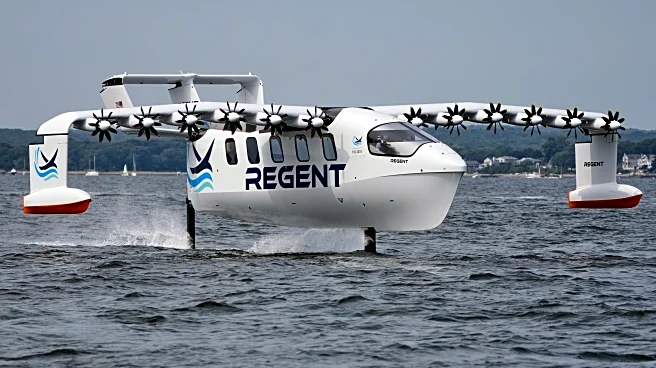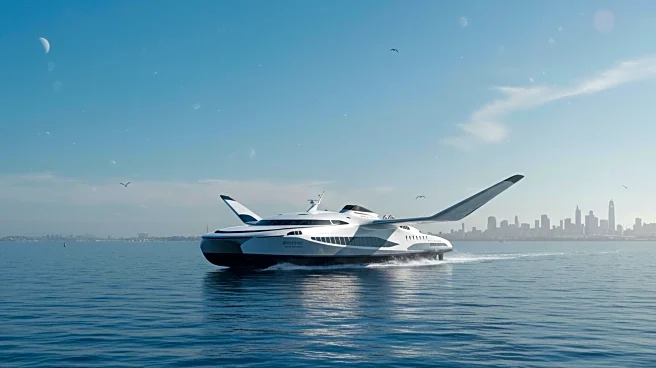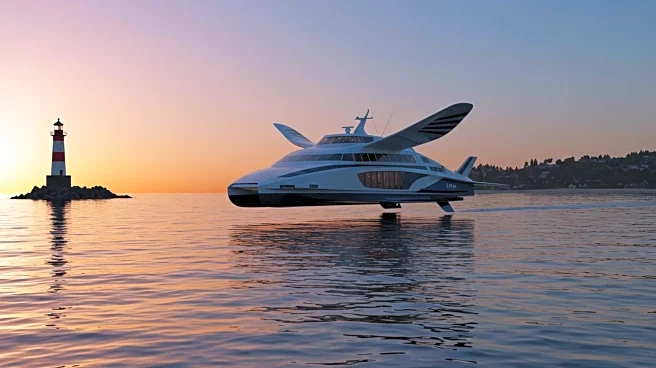What's Happening?
Regent Craft has conducted a test run of its winged passenger ferry, the Viceroy Seaglider, on Narragansett Bay, Rhode Island. The vessel, named Paladin, features a 65-foot wingspan and twelve electric propellers, designed to operate in three modes: float, foil, and fly. The seaglider aims to travel at speeds up to 180 miles per hour, utilizing a 'ground effect' similar to that used by birds. The company plans to use the seaglider for commercial ferry routes and military applications, including island-hopping troop transport. Backed by investors like Peter Thiel and Mark Cuban, Regent Craft is working to prove the vessel's seaworthiness to the U.S. Coast Guard and other regulators.
Why It's Important?
The development of the Viceroy Seaglider represents a significant innovation in coastal transportation, potentially reducing travel time between major cities like New York and Miami. It offers a quieter, emission-free alternative to traditional methods, aligning with environmental goals. The military interest in the seaglider highlights its strategic potential in defense, particularly in the Indo-Pacific region. The vessel's ability to fly below radar and above sonar could provide advantages in intelligence and anti-submarine operations. The project also reflects a broader trend towards electrification and advanced maritime technology, impacting industries from transportation to defense.
What's Next?
Regent Craft plans to conduct further trial flights off Rhode Island's coast by the end of summer or early fall. The company is constructing a manufacturing facility to produce the seagliders, with passenger services expected by 2027. As the seaglider undergoes regulatory approval, Regent is engaging with potential commercial and military customers. The U.S. Marines are considering the seaglider for troop transport, which may involve modifications for longer journeys. The success of these trials and regulatory approvals will determine the seaglider's future in both commercial and defense sectors.
Beyond the Headlines
The seaglider's classification as a ship rather than an aircraft by the International Maritime Organization underscores the unique regulatory challenges it faces. Its design, inspired by 1930s flying boats, aims to revive a bygone era of travel with modern technology. The project raises questions about the balance between innovation and safety, particularly in varying sea conditions. The involvement of high-profile investors suggests confidence in the seaglider's commercial viability, potentially influencing future investments in similar technologies.















